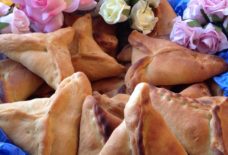The History of Traditional Egyptian Music and Dances Throughout Time
Background: Religion and Music:
Egyptian Dance: Types and Traditions:
Interpretive dance was a regular part of religious rituals. It served to elevate dancers to a closer relationship with a deity. One common feature of ancient Egyptian dances was people impersonating a deity.
For example, “dancers would imitate the goddess by invoking her epithet, The Golden One, and enacting stories from her life or interpreting her spirit through dance.”
There was a variety of dance types that Egyptians participated in including
- The purely movement dance
- Outburst of energy
- Just dancers enjoying movement
- The gymnastic dance
- More strenuous and difficult
- Required flexibility and training
- The imitative dance
- Emulating animals movements
- The pair dance
- Two men or two women dancing together
- The group dance
- 4-8 dancers matching rhythm
- The war dance
- Recreations for resting mercenary troops
- The dramatic dance
- Depiction of a king holding an enemy
- The lyrical dance
- Similar to today’s ballet
- The grotesque dance
- Primarily performed by dwarfs
- The funeral dance
- Three parts performed at funerals
- The religious dance
- Temple dances
All of these dances had the purpose of elevating someone’s spirit. Clearly, dance in ancient Egypt was very much connected to religion. What’s interesting; however, is that men and women were never depicted dancing together. Also, wealthy Egyptians would not dance in public, only lower-class citizens did. Wealthy citizens keep slaves to entertain at their banquets.
Egyptian Music:
In the time when the Egyptian dynasties of the pharaohs were established, music was very important in Egyptian society. The Egyptian gods Hathor and Bes were gods of music. As a result, there were music and dance ceremonies devoted to them.
Music was used in many contexts in Egypt: “temples, palaces, workshops, farms, battlefields, and the tomb.” Egyptians used instruments, clapping, chanting, and singing in their music.
There were even musicians (talented singers and harp players) who were connected to the royal household. Also, there were musicians who served as entertainment at parties and festivals.
Egyptian Instruments:
Egyptian Music: Modern Day
Check out Arab America’s blog here!









